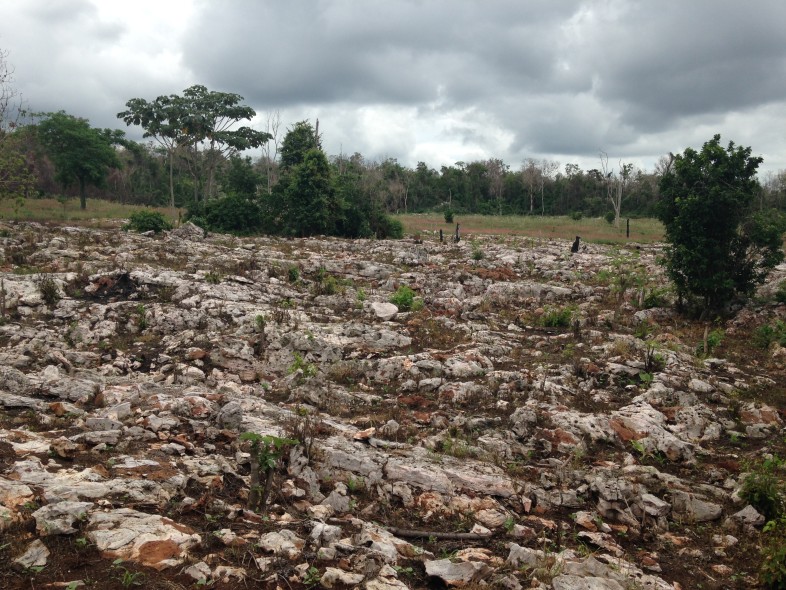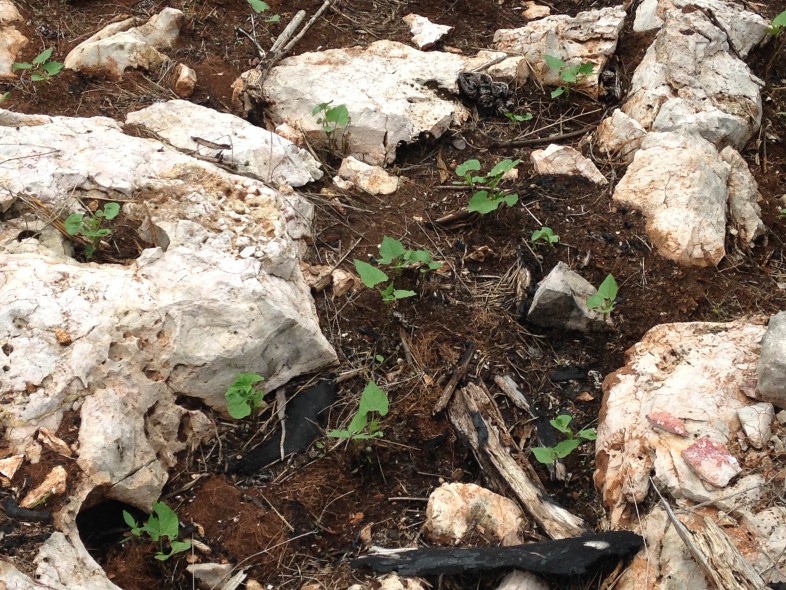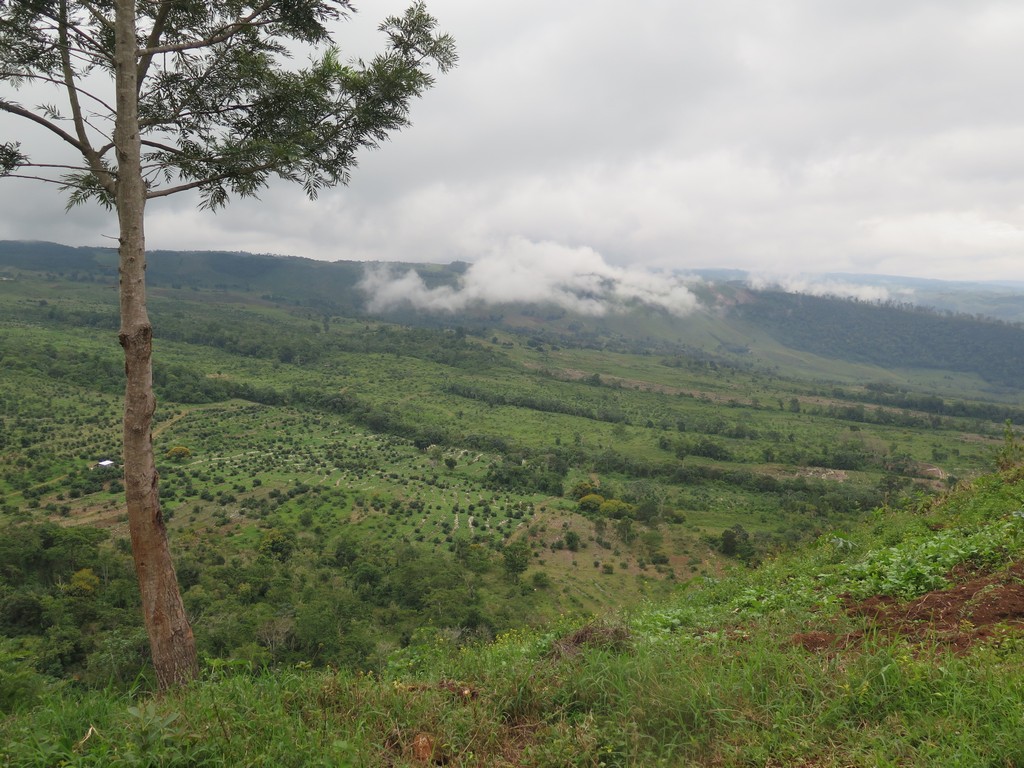Sierra de Bahoruco National Park, in the southwest corner of the Dominican Republic, is arguably one of the world’s most biologically diverse locales. Encompassing a wide range of elevations, the park includes environments ranging from dry forest at lower elevations to montane cloud forest at mid-elevations and finally, capping the highest peaks, extensive stands of the endemic Hispaniolan pine. Not surprisingly given the diversity of elevations and landforms in the park, the park is home to a staggering array of endemic lifeforms. During the winter, it also happens to support a significant proportion of the world’s population of Bicknell’s Thrush.
As we have noted before, Sierra de Bahoruco National Park is in many ways a protected area on paper only. Rapid deforestation within the park is widely acknowledged. Although evidence of the problem has been brought before government officials responsible for the management of the park, and indeed published as part of an expose in a major Dominican newspaper, little progress has been made to stem the ongoing destruction of forests inside the park.
This summer, the government took a decidedly modest step forward, announcing the creation of a technical committee tasked with developing a strategic plan to identify and address the problems facing the park. Earlier this month, as one of its first official actions, the committee set out on a fact-finding tour of the park and its surrounding communities. Along with a delegation from the US Fish and Wildlife Service, I had the opportunity to accompany the group as an observer.
In many ways, conditions on the ground are worse than I had expected. Landless sharecroppers, almost all of whom are Haitian, acting under the direction of Dominicans that claim title to areas inside the park, have cleared vast areas of dry forest on the south side of the park to plant subsistence crops of beans and maize. The workers keep 80% of what they can harvest, with the remaining 20% returning to their patron. One sympathizes dearly with these workers, who have no other options to support themselves and their families, but the system of agriculture is entirely unsustainable. The fires used to clear the land burn off what little organic soil exists, leaving behind barren limestone bedrock.

Dry forest inside Sierra de Bahoruco National Park recently cleared and burned to prepare for planting. The open field in the background was forest that was cleared but has not yet been burned.
Crops take root only in the ash-filled crevices. A clearing might produce only a single harvest before its fertility is exhausted, meaning that each new planting requires more forest clearing. Once cleared and burned to bedrock, the prospect of forest regeneration is distant at best; more likely is that the clearings grow up as grassy savannah dominated by invasive, exotic shrubs.

Slash and burn agriculture: beans and maize planted into an ash-filled crevice left behind after forest clearing and burning.
Leaving the lowlands and travelling by rough road into the higher elevations of the park, we encountered vast, industrial-scale avocado farms that continue to expand into the cloud forest that Bicknell’s Thrush depends upon. These are sophisticated, export-driven operations, which makes their flaunting of the park boundaries all the more brazen. They cannot reasonably claim ignorance of the limits of their property, yet many try. Aggressive clearing of forest has created a disputed, albeit de facto, boundary that now lies well inside of the legally demarcated park. In addition to the direct loss of forest associated with agricultural expansion, the farms also have an indirect effect because they are a temporary home to large numbers of transient laborers, most of whom cross back and forth over the nearby border with Haiti. These laborers rely on charcoal as a domestic energy source, and the charcoal is produced from wood harvested from forests inside the park.
Leaving the avocado farms, we crossed into high pine forest. Although these forests carry a legacy of misuse by humans, at present they are largely undisturbed by people. Unusually large and hot fires are the most pressing threat. The irony, of course, is that these forests are relatively poor in biological diversity; could you choose one forest type to be spared the onslaught of humanity, it would not be these.
Crossing the spine of the Sierra de Bahoruco, we descended back through cloud forest – much more extensive on the north slope – and finally into the arid lowlands of the Lago Enriquillo rift valley, remnant of an ancient seaway that once split Hispaniola into two islands. Illegal deforestation for agriculture and charcoal production pose problems on the north side of the park, but to a far lesser extent than we witnessed on the south side. The north side of the park, thankfully, remains largely intact. In community meetings held in two small towns on the north side of the park, I was also struck by the broad support for the park expressed by most citizens. People clearly valued the services provided by the forests protected inside the park – most notably a supply of clean water – and saw the park itself as a potential engine for economic growth. This was in stark contrast to the views we heard at a community meeting on the south side of the park, where many decried the existence of the park as a government land grab and an impediment to their economic well-being.
Pessimism was easy at the end of the trip. The challenges facing the park are huge, and time is short. We must expect that arguments about protected areas and the value of intact forests will ring hollow for impoverished people desperate to feed themselves. Powerful and entrenched interests will fight to maintain the status quo, and perpetuating the status quo for even another decade will mean the functional loss of the park and with it some untold number of unique lifeforms. Despite all of this, I feel a tempered optimism that success is still possible. I was inspired by the dedication I saw in some of those from government and civil society who are working to save the park. They do so not for glory, and certainly not for money, but because they believe it is right. I was encouraged by signs of public support for the notion of a protected area that is actually protected, and by signs of public outrage at the current state of affairs. I choose to be hopeful, not because I am certain of success, but because the alternative is to see a world where something as unique and spectacular as the Sierra de Bahoruco is allowed to vanish.


Great report. There are strong advocates for the park, who keep people posted on the depredations, but they need all the help they can get!
Creo que este no es el primer paso. Creo que se ha realizado mucho comparado con como estaba. Para nuestra organización (SOH Conservación) ya no es un paso mas, es seguir ejecutando día a día la labor, el amor y el respeto que merece nuestra naturaleza y el área protegidas. Como esta el area no es culpa de uno sino de todos los que la hemos descuidado por mucho tiempo.
Espero que este sea un paso para lograr el trabajar en conjunto con cada una de las necesidades del parque y no solo echar la culpa a alguien.
saludos
Jorge Brocca
The root problem for this park I believe is the rapid growth in the human population. If this cannot be addressed I am afraid the future will be dim not only for this park but the entire planet.